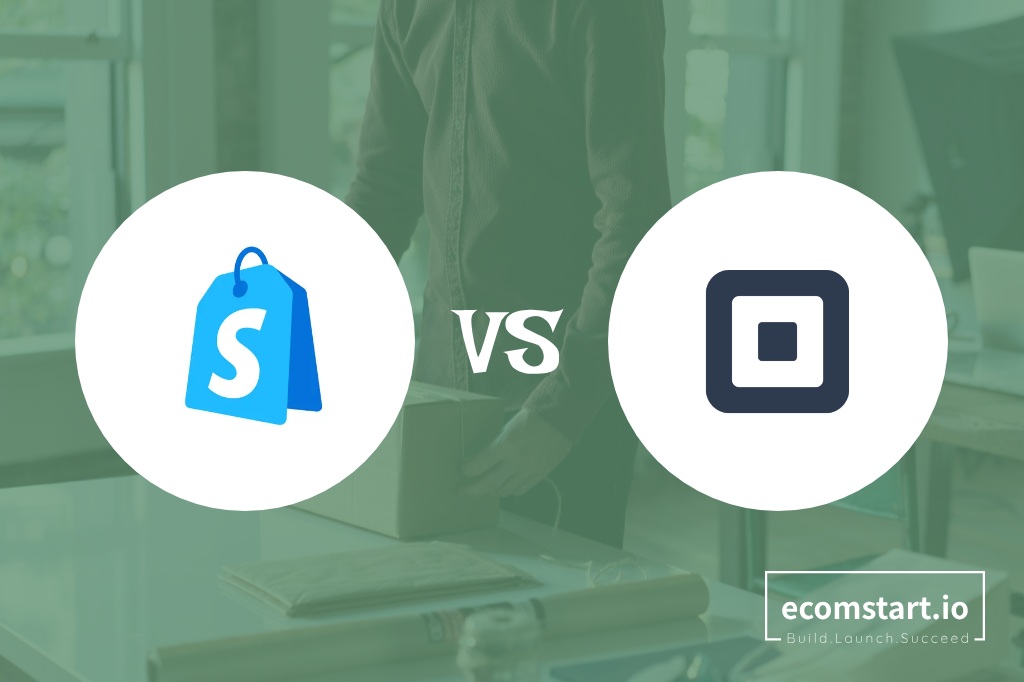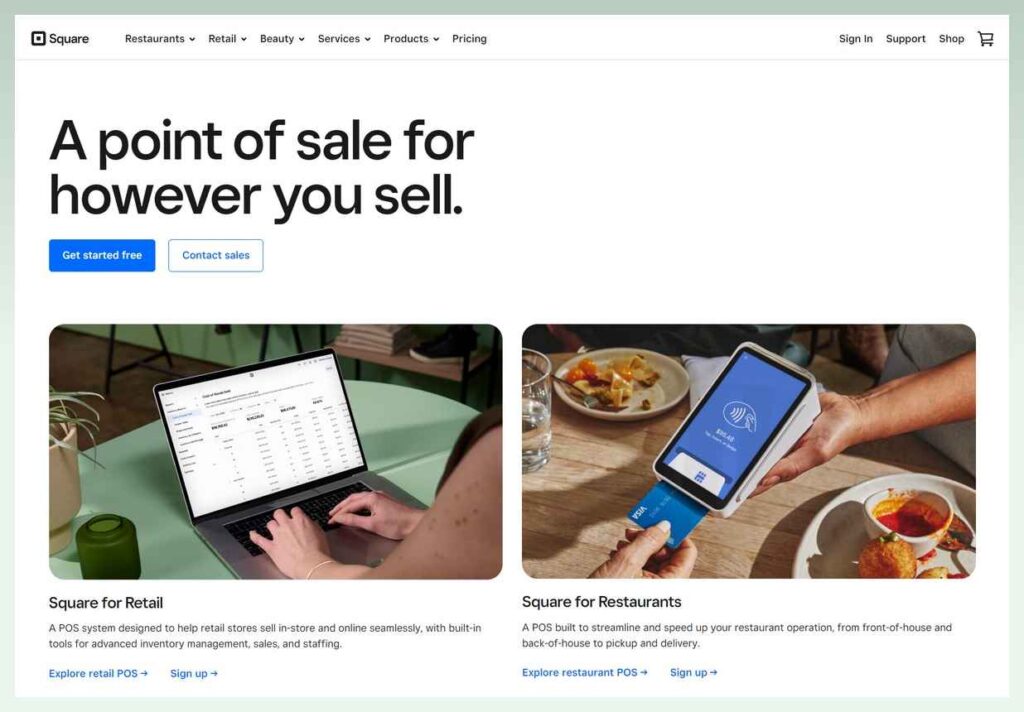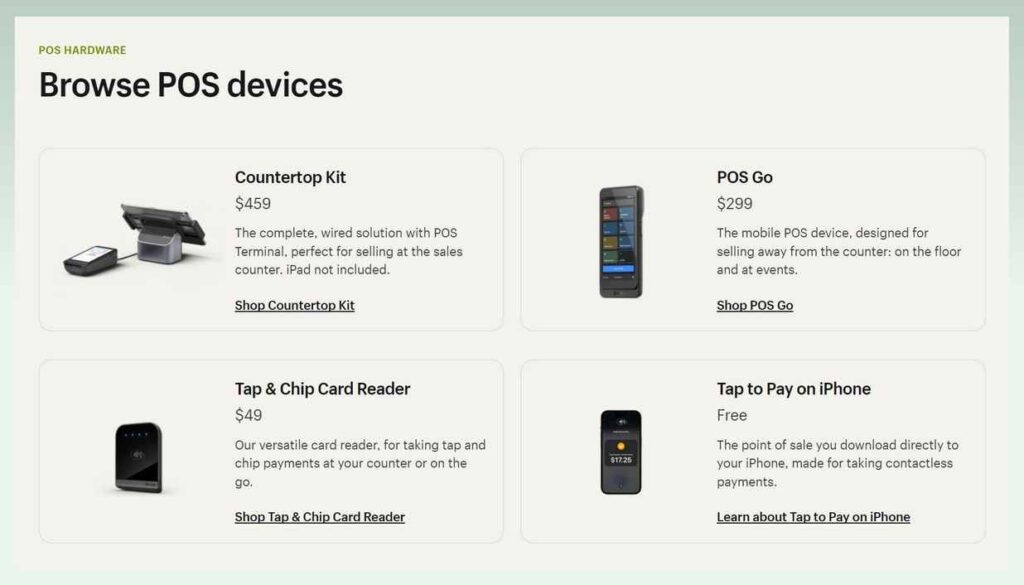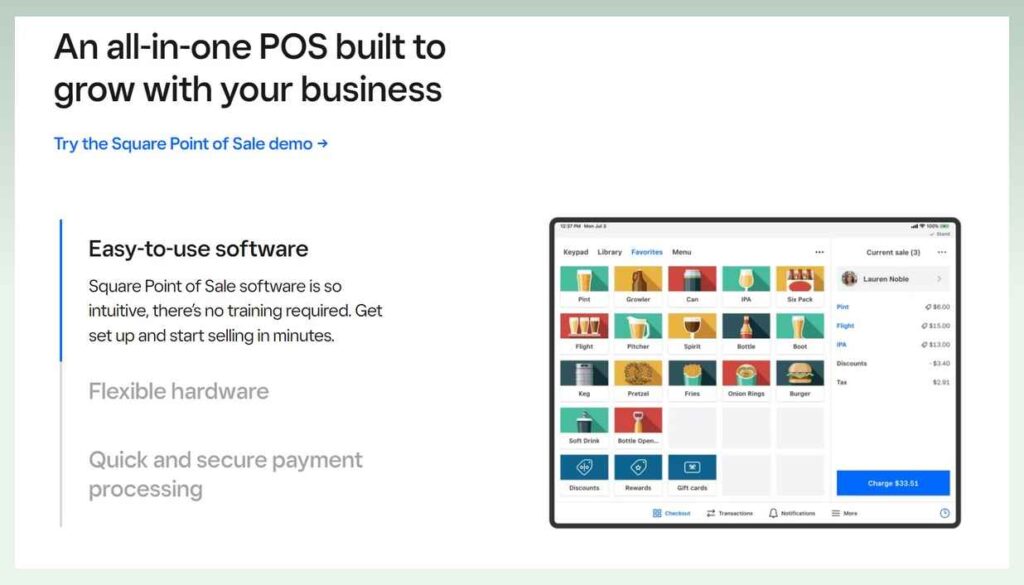Shopify POS vs Square POS: Which Is Better For Small Business

In the e-commerce space, Square and Shopify have an excellent reputation, and for good reason. Both systems offer offline options to complement their online POS Software offerings.
Shopify POS vs Square POS are comparable in many ways, yet they are not the same in others. These differences mean that although certain retailers prefer Shopify, Square will work better for others. Which option is best for you as a business owner will ultimately rely on your particular demands.
We evaluate the two most widely used point-of-sale systems on the market, Square POS vs Shopify POS, to help you decide which is best for your company.

Quick verdict:
Shopify POS is the overall victor. Although Square POS is praised for its transactional ease and other noteworthy features, many people may find it a less desirable option due to some limitations.
1. Key differences between Shopify POS vs Square POS
Shopify POS is a component of the broader Shopify ecosystem, which also consists of other business tools, an online store builder, and payment processing.
Because of this, it’s a fantastic option if you want a one-stop shop for all your online and offline sales needs.

Conversely, Square POS is made exclusively for in-person transactions and provides a selection of hardware choices to enable payments while on the go. Square aims to offer a comprehensive solution by merging hardware and software into one convenient location.

The following are some of the main distinctions between Square POS vs Shopify POS:
- Square’s POS interface is less configurable than Shopify’s.
- In contrast to Shopify POS, which is only functional when online, Square allows you to accept card payments while you are not online.
- Shopify provides round-the-clock customer service for all of its premium plans. Square’s customer help is limited to weekdays and is available exclusively on its most costly plans.
- Compared to Square, Shopify POS is available in many more nations: Shopify is used in over 175 countries globally, while Square is only available in 8.
2. Shopify POS vs Square POS: A deep dive comparison
If you’re in a rush, look at our quick comparison in the table below. It shows the main differences between Shopify POS and Square POS.
To learn about them in detail, keep rolling as we break down each characteristic to let you know which is better.
Name | Shopify POS | Square POS | The verdict |
|---|---|---|---|
Cost |
|
| Square POS 🏆 |
Features |
|
| Tie 🤝 |
Hardware | Many hardware components can seamlessly integrate with the Shopify POS system. | Square provides a comprehensive selection of add-ons to meet every point-of-sale requirement. | Shopify POS 🏆 |
Software/ App Integrations | Shopify boasts a broader range of integrations, providing several software applications focused on retail. | Square POS provides many integration options. Notably, some are devoted to offering features to restaurants and food-related enterprises. | Shopify POS 🏆 |
Ease of use | Shopify POS is simple to set up and offers an intuitive user interface | Square POS is widely recognized for its ease of use and adaptability. | Tie 🤝 |
2.1. Shopify POS vs Square cost
Shopify POS vs Square price are different, but there are some fees both services charge their users.
Keep scrolling to find out the explanation of Shopify POS vs Square price below.
2.1.1. Shopify POS Pricing
Here is the breakdown of Shopify POS Pricing:
Subscription Fees | To utilize the Shopify point-of-sale software, you must sign up for one of the Shopify pricing plans, which range in price from $5 to $399 per month. |
POS Software Fees | You may choose between two different POS software levels after you become a Shopify merchant:
|
Transaction Fees | In-person transactions using the Shopify POS system are subject to transaction and card processing fees. These costs change depending on your current Shopify subscription and whether or not you use Shopify Payments, the platform’s integrated payment gateway.
|
Hardware Fees | Shopify provides various point-of-sale hardware options for your business. However, using Shopify POS hardware does cost money.
|
2.1.2. Square POS Pricing
Here is the breakdown of Square POS Pricing:
Subscription Fees |
|
Transaction Fees |
|
Hardware Fees | Square provides a range of hardware choices:
|
✨ The verdict: Square POS comes out on top in this Shopify POS vs Square cost comparison. Because Square has no up-front costs and only credit card fees, it is a cost-effective choice for small businesses that prioritize in-person purchases.
2.2. Features

Both Shopify POS and Square POS offer similar features, such as:
- Taking cash payments in person using various payment options, such as credit cards, cellular wallets, Apple Pay, Google Pay, Samsung Pay, and iPhone Tap to Pay
- Synchronizing your POS system with an internet store that you develop
- Employing a variety of POS hardware
- Maintaining and tracking inventory; sending consumers print, email, and SMS receipts; and establishing discounts
- Enabling product returns; arrange for local delivery and collection
- Handling unique sales to allow you to take set and customized gratuity amounts
- Establishing client accounts for recurring orders
- Offering PCI-compliant, safe, and encrypted payment processing
Yet, there is a difference between Square POS vs Shopify POS in terms of features, especially when it comes to advanced functionalities.
If you wish to use the following Square features, you’ll require one of its premium POS plans.
- View the history of inventory and print barcodes
- Get estimates for stocks
- Make purchase orders that are automatically generated.
- Carry out thorough inventory counts, receive large quantities of merchandise, and execute cross-location returns.
Besides, to perform any of the following, you’ll need a Shopify “POS Pro” plan:
- Make standard modifications
- Promote interactions
- Provide receipts that are printed just for you
- Consumer carts are saved and retrieved.
✨ The verdict: It is a tie! Square POS vs Shopify POS provide similar functionality, including order tracking, payment processing, and inventory management. Shopify POS provides more sophisticated features, including marketing tools, customer profiles, and integrated analytics. Square POS provides greater adaptability in terms of hardware choices and connectors.
2.3. Hardware

Many hardware components can seamlessly integrate with the Shopify POS system. Another notable feature of Shopify is its hardware warranty. With this guarantee, customers can rest easy knowing that the platform will handle any problems with their gear immediately and ship out replacements.
Connected hardware – smoother sale
Discover how Shopify POS hardware & Software work together & bring out the best experience
Square offers a broad range of hardware choices. In addition, Square guarantees device compatibility and provides a comprehensive selection of add-ons to meet every point-of-sale requirement, such as scales, cash drawers, barcode scanners, and printers.
Shopify POS | Square POS |
|---|---|
|
|
✨ The verdict: Hardware warranty programs distinguish Shopify as the victor in this contest.
2.4. Software/ App Integrations

Square POS provides many integration options. Notably, some are devoted to offering features to restaurants and food-related enterprises. This reflects that Square often targets specific industrial segments with its app offerings.
Conversely, Shopify POS is distinguished by the vast network of third-party apps accessible through the Shopify App Store. Shopify boasts a broader range of connections, providing several software applications focused on retail.
Shopify POS | Square POS |
|---|---|
|
|
✨ The verdict: With more applications and integrations, Shopify POS emerges victorious. Shopify outperforms Square because of its more significant number of third-party app connectors, even though Square’s API offers flexible connections.
2.5. Ease of use
Simply put, Shopify POS is simple to set up and offers an intuitive user interface, a low learning curve, and valuable features like customizable customer profiles.
Square POS is widely recognized for its ease of use and adaptability. Thanks to the customization available, any user may design a dashboard specifically for their business requirements.
Shopify POS | Square POS |
|---|---|
|
|
✨ The Verdict: It is another tie since both provide retailers with all the necessary tools to utilize and customize their POS functionalities.
3. Key takeaways
To help you evaluate 2 of them one last time, we have created below to compare their pros and cons.
Pros | Cons | |
|---|---|---|
Shopify POS | ✅ Shopify POS is simple and doesn’t require technological knowledge. ✅ The system may be accessed from any location with an internet connection because it is cloud-based. ✅ The wide choice of applications available, which address a variety of company requirements, improves Shopify’s versatility and usefulness. ✅ Inventory can be synchronized within the system, guaranteeing precise and reliable stock management for businesses with both online and physical storefronts. | ❌ Pricing plans may be costly, particularly for small business owners. ❌ A few customers have complained about the system stopping or crashing during moments of high sales. ❌ Shopify POS’s offline functionality may be restricted during internet outages. |
Square POS | ✅ Square POS boasts an intuitive interface that can be tailored to your company’s requirements. ✅ There are no long-term commitments or additional costs, and the basic Square POS app is free. ✅ Square excels at conducting transactions offline with ease. This capability is priceless for companies that only sometimes have dependable internet connectivity or are situated in locations with sporadic internet outages. | ❌ Square POS can only be customized to some degree. ❌ Square’s selection of third-party apps is not as broad as Shopify POS’s. This constraint may impact businesses that need more diversified integrations or unique capabilities. |
So, is Shopify POS better than Square POS? Should you pick Shopify POS vs Square for small business?
Overall, they are top choices and can meet your common needs but in some specific cases, one is better than the other.
✨ Shopify POS is best suited for:
- Artists, owner-operated stores, lone proprietors with little in-person sales
- Online artisan retailers are expanding into pop-up marketplaces, and solo entrepreneurs are doing sporadic live sales events.
- Businesses with frequent in-person sales and several staff members, including brick-and-mortar stores, pop-up shops, and establishments with multiple employees.
✨ Square POS is best suited for:
- Boutique apparel retailers, neighborhood bookstores, and farmers market sellers. These companies do most of their business offline, maybe with a tiny internet presence.
- Food trucks, family-owned eateries, and coffee shops are nearby. Square provides a point-of-sale system specifically designed for restaurants, with features catered to the particular requirements of the food service sector.
- Independent consultants, small service providers, and crafters selling at fairs. Square works well for small businesses because the owner is frequently the only employee.
📚 If you also want to consider about ecommerce capability of these two platform, consider reading our guide on Shopify vs Squarespace and Shopify vs other platforms
4. Conclusion
Square POS vs Shopify POS systems address distinct business demands and provide unique functionality. Shopify POS eventually prevails over the competition despite Square POS’s robust integration capabilities, approachable design, and data-driven insights, particularly if you wish to manage an online store and a POS system.
With its enormous selection of applications and connections, it offers more alternatives to increasing your online and offline sales than Square by enabling you to develop more custom and complex online storefronts.
Continue reading new articles at ecomstart.io for more insight about ecommerce landscape! If you have any question, feel free to contact us.


